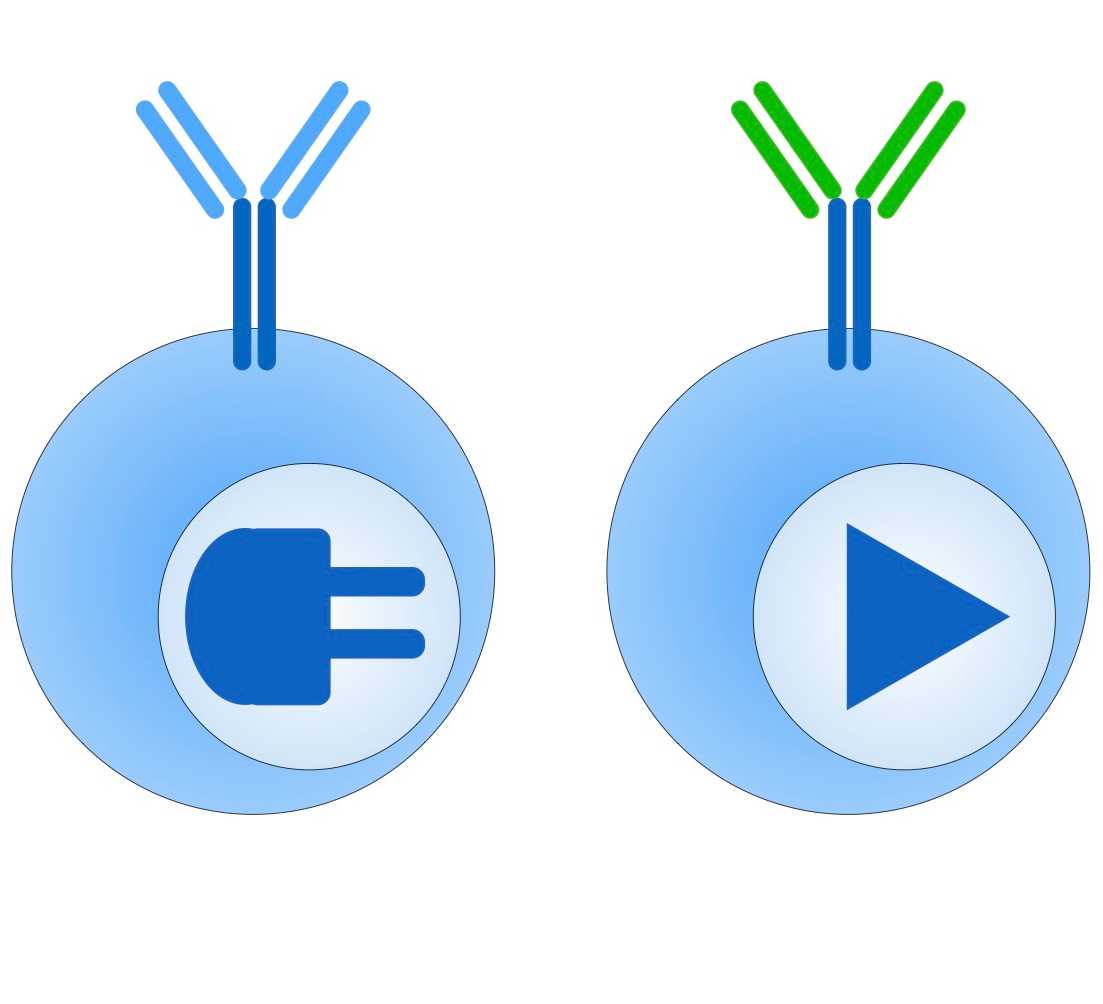An Old Technology Brought into Modern Days
ETH Professor and scientist Sai Reddy and members of his research group have engineered a hybridoma platform for reprogramming the antibody specificity of immune cells. This new platform - so-called plug-and-(dis)play hybridomas - enables researchers to easily generate new cell lines that secrete any antibody of interest.

By applying the brand new genetic engineering method of CRISPR-Cas9 to one of the most traditional techniques for antibodies - hybridomas - Sai Reddy has modified the immunoglobulin locus of hybridoma cells to express new full-length antibody proteins. As Sai Reddy explains: "CRISPR-Cas9 uses a guide RNA to target and cleave specific regions of a genome, enabling the precise knock-out and knock-in of genes. Through the revolutionary advances in genome editing provided by CRISPR-Cas9, we are now able to efficiently exchange the variable regions of the immunoglobulin locus of hybridoma cells, thus reprogramming their specificity."
Hybridoma cells - the traditional technique for antibody screening and production - are fusions of mouse primary B cells with myeloma tumor cells which lead to stable, continuously and rapidly-proliferating antibody producing immune cells. Hybridomas are thus capable of producing immunoglobulins that are specific for viral, bacterial or cellular targets. Despite its widespread use by academic and industrial biotechnology researchers, the hybridoma technology has remained relatively unchanged in the last four decades. But as Sai Reddy puts into perspective: "The idea of engineering the immunoglobulin locus of hybridomas has been around for a very long time, in fact there were publications and patents that reported this as far back as 25 years ago. However, these previous methods were only able to alter the constant region of the immunoglobulin locus, thus they were unable to reprogram the specificity of hybridoma cells. The main reason was that these previous attempts relied on classical methods of gene-targeting, which were too inefficient and challenging to use for genome editing of the immunoglobulin variable regions."
The recently engineered plug-and-(dis)play hybridomas can be reprogrammed with only a single transfection and screening step to obtain a stable antibody producing cell line. Sai Reddy thus expects these plug-and-(dis)play immune cells to become a very reliable and standard method for antibody production because of the advantages it provides in terms of speed, cost, and simplicity. The new method is inexpensive and requires as short as just 1 - 2 weeks. Typical methods for making such cell lines can require anywhere from 6 months to 1 year.
The number of future opportunities is enormous: "We plan to expand plug-and-(dis)play hybridomas as a platform for screening libraries of antibodies, thus they could be used in antibody engineering and directed evolution experiments. We also plan to adapt them to produce human antibodies." Eventually this new method could thus be used to produce therapeutic antibodies in urgent situations. For example, during the 2014 Ebola virus outbreak, there was a severe shortage of a highly-promising experimental antibody drug, because it typically takes up to one year to generate the stable cell lines used for therapeutic antibody production. In the future, the plug-and-(dis)play hybridoma platform could be used to produce such antibody drugs in pandemic and emergency situations.
Reference
Pogson M*, Parola C* et al.: Immunogenomic engineering of a plug-and-(dis)play hybridoma platform. Nature Communications 2016, 7: external page doi:10.1038/ncomms12535